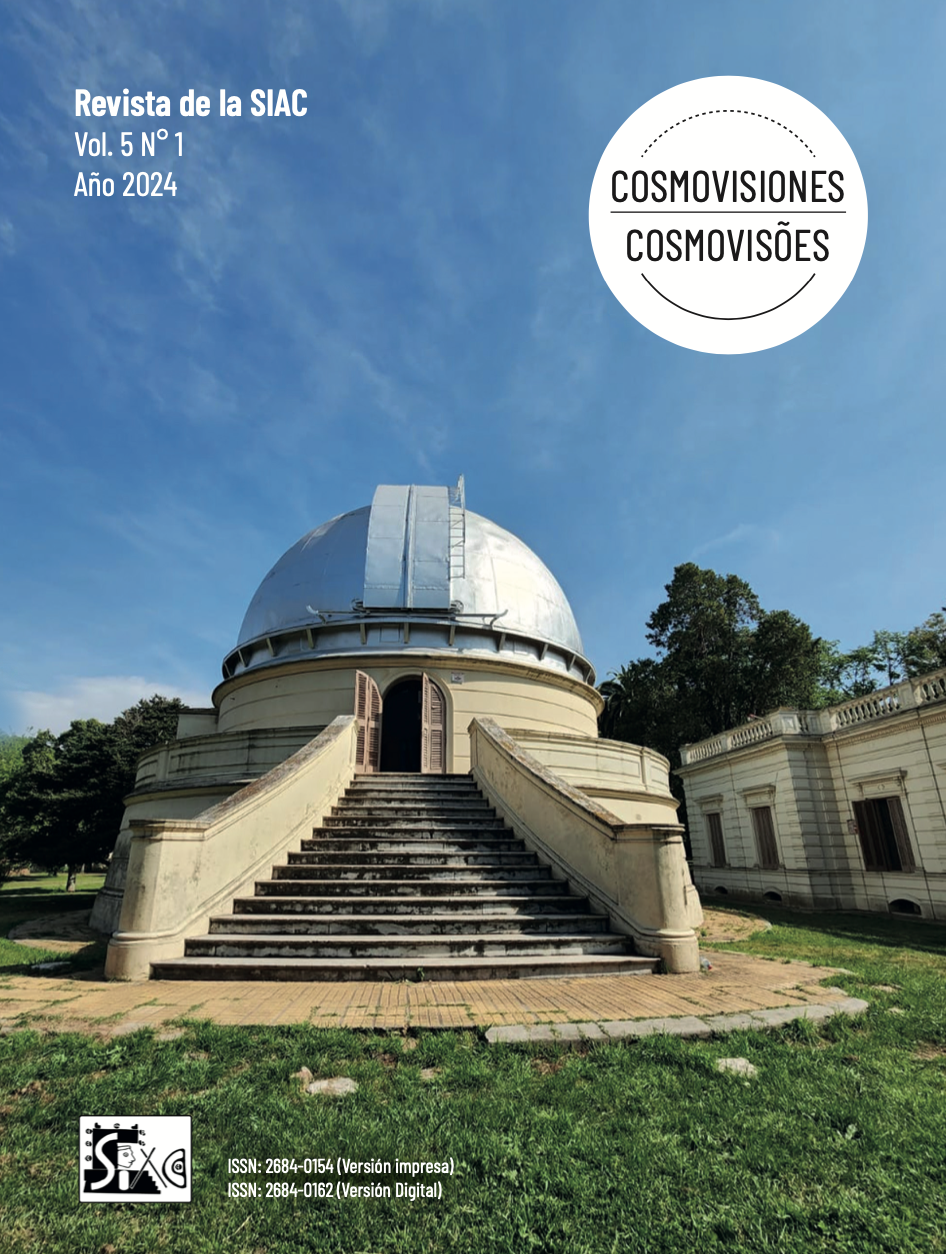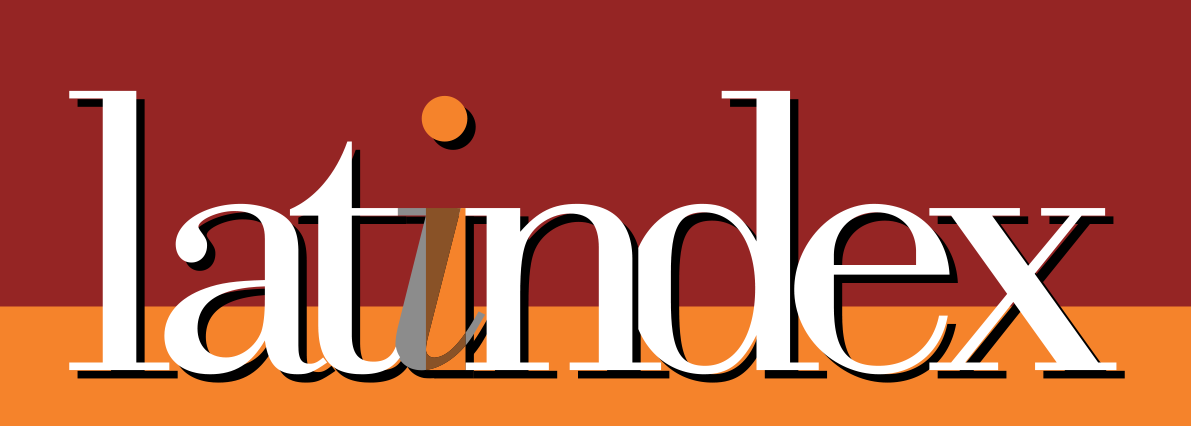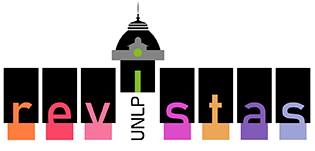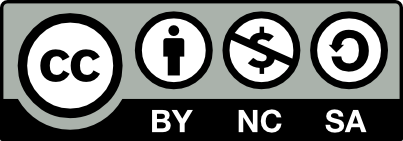Notational production rules in the Muisca culture iconography, Colombia
DOI:
https://doi.org/10.24215/26840162e022Keywords:
Muisca, indigenous art, numerical information, spindle whorls, semasiographyAbstract
This paper explores the non-aesthetic components of Muisca indigenous artistic expressions, with a focus on numerical information encoded within the iconography.
The paper presents various examples of artifacts that exhibit evidence of numerical quantities, such as rock art panels, textiles, and lithic industry objects, however, spindle whorls, a category of artifacts characterized by their monochromatic and simplified nature, are primarily considered in this preliminary analysis. The presence of sequences of elements and compositions in these artifacts, including triangles, strokes, spirals, and bird heads, suggests the potential existence of an underlying grammar governing the production of these expressions. The paper suggests adopting an epigraphic perspective to better understand the formal aspects of these representations before exploring their semantics. Ultimately, this approach could provide a better understanding of how meanings are embedded into the system.
Downloads
References
Ballestas Rincón, L.H. (2009) Las formas esquemáticas del diseño precolombino de Colombia : relaciones formales y conceptuales de la gráfica en el contexto cultural colombiano.
Boone, E.H. and Mignolo, W. (1994) Writing Without Words: Alternative Literacies in Mesoamerica and the Andes. Durham: Duke University Press.
Boone, Elizabeth Hill, and Gary Urton. 2011. Their Way of Writing: Scripts, Signs, and Pictographies in Pre-Columbian America. Dumbarton Oaks Pre-Columbian Symposia and Colloquia. Washington, D.C.: Dumbarton Oaks Research Library and Collection.
Chomsky, N. (2006) Language and mind. 3rd ed. Cambridge, UK: Cambridge University Press. Available at: http://hdl.handle.net/2027/heb.08422 (Accessed: 28 March 2023).
Coe, M.D. (1993) Breaking the Maya code. 1st pbk. ed. New York: Thames and Hudson.
Coe, M.D. (2005) Reading the Maya glyphs. London : Thames & Hudson. Available at: http://archive.org/details/reading-mayaglyph0000coem (Accessed: 13 March 2024).
Coulmas, F. (1999) The Blackwell encyclopedia of writing systems. 1st paperback ed. Oxford, OX, UK: Blackwell Publishers.
García, G.R. (1971) ‘Elementos decorativos del arte muisca En los volantes de huso’, Universitas Humanística, 2(2). Available at: https://revistas.javeriana.edu.co/index.php/univhumanistica/article/view/10587 (Accessed: 28 March 2023).
Izquierdo, M.A. (2009) ‘The Muisca Calendar: An approximation to the timekeeping system of the ancient native people of the northeastern Andes of Colombia’. arXiv. Available at: https://doi.org/10.48550/arX-iv.0812.0574.
Izquierdo, M.A. (2011) ‘Contributions to the Study of the Muisca Calendar’, Proceedings of the International Astronomical Union, 7(Symposium S278), pp. 106–117. Available at: https://doi.org/10.1017/S174392131101252X.
Izquierdo, M.A. and Morales, J.D. (2006) ‘El instrumental astrónomico prehispánico en la cultura Muisca’, in Trabajos de arqueoastronomía : ejemplos de Africa, América, Europa y Oceanía, 2006, ISBN 84-611-0963-5, págs. 161-184. Trabajos de arqueoastronomía : ejemplos de Africa, América, Europa y Oceanía, Agrupación Astronómica de La Safor, pp. 161–184. Available at: https://dialnet.unirioja.es/servlet/articulo?codigo=2039072 (Accessed: 28 March 2023).
Jiménez de Muñoz, E. (2009) La representación del ave símbolo del Dios Sua. El Dios Sol entre los Chibcha. Fundación Universidad de América. Available at: https://repository.uamerica.edu.co/handle/20.500.11839/7216 (Accessed: 28 March 2023).
Silva, V.M. (1985) Clasificación y análisis de los volantes de huso muisca. Universidad Nacional de Colombia.
Triana, M. (1970) La civilización chibcha. Bogotá: Editorial Kelly (Biblioteca Banco Popular).
Downloads
Published
How to Cite
Issue
Section
License
Copyright (c) 2024 Manuel Izquierdo

This work is licensed under a Creative Commons Attribution-NonCommercial-ShareAlike 4.0 International License.
Authors who publish in this journal agree to the following terms:
The authors retain intellectual authorship of the work and guarantee the journal the right to be the first publication of the work.
Authors may share the work with acknowledgment of authorship and the initial publication in this journal.
Authors may separately establish additional agreements for the non-exclusive distribution of the version of the work published in the journal (for example, placing it in an institutional repository or publishing it in a book), with an acknowledgment of its initial publication in this journal.
The journal offers free access ("open access") to all its content. The articles are available to be read, downloaded, copied, printed and/or researched according to the Creative Commons license: CC BY-NC-SA (Attribution - Non-Commercial - Share Alike-4.0 International)

The content of the journal is fully available from its publication. Readers are required to correctly cite the journal and the author of the downloaded content
















